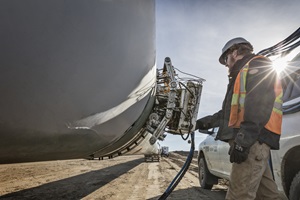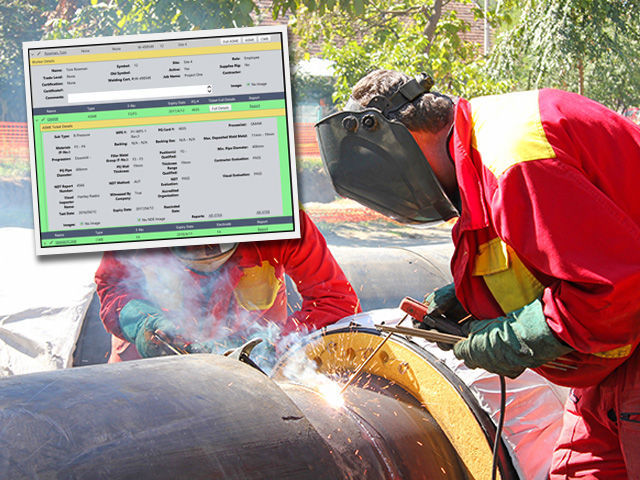Comprehensive Review of Pipe Welding Assessment Treatments
Pipe welding examination treatments play an important role in assuring that welded connections meet rigorous market standards and requirements. From meticulous pre-welding evaluations to comprehensive post-weld analyses, a distinct evaluation procedure is vital for preserving the architectural strength of pipelines.
Pre-welding Assessment Preparations
Prior to beginning the welding procedure, complete pre-welding evaluation preparations are essential to make certain the integrity and quality of the weld joint. These prep work include a precise examination of the products to be welded, the welding equipment, and the job atmosphere. By conducting detailed pre-welding assessment prep work, potential concerns can be determined and resolved early on, leading to trusted and top notch weld joints.
Welding Procedure Credentials
Extensive pre-welding inspection prep work lay the foundation for the critical procedure of Welding Treatment Certification, making sure the stability and high quality of the weld joint. Welding Procedure Credentials (WPQ) is a vital action in the welding process that involves screening and licensing welding treatments to assure they fulfill details standards and requirements. The WPQ process normally includes welding treatment specification development, welding procedure credentials testing, and paperwork of the outcomes.
During welding procedure spec advancement, crucial details such as the welding process, welding products, joint design, and welding specifications are specified to develop a comprehensive procedure. Ultimately, welding procedure qualification testing is carried out to confirm the recommended treatment's honesty. This testing typically includes welding examination promo codes that go through numerous mechanical and non-destructive examinations to analyze the weld's quality and adherence to the specified standards.
In-process Weld Inspection
During the welding process, in-process weld evaluation plays a vital duty in making sure the top quality and honesty of the weld joint - Pipeline Welding Inspection. This kind of inspection involves checking the welding parameters, evaluating the weld bead formation, and identifying any kind of potential problems or discontinuities as they take place. By conducting in-process weld assessments, welding drivers can without delay resolve any kind of problems that may occur, thus avoiding further defects and making certain that the final weld fulfills the needed specifications
Usual techniques made use of for in-process weld evaluation consist of visual assessment, liquid penetrant screening, magnetic particle testing, ultrasonic screening, and radiographic testing. Generally, in-process weld evaluation is important for keeping the top quality and reliability of welded pipes.
Non-destructive Testing (NDT)
Non-destructive Screening (NDT) is a crucial method used in pipeline welding see here evaluation to evaluate the honesty of weld joints without causing damage to the welded structure. By using various NDT strategies, assessors can review the high quality of welds and determine any type of flaws or discontinuities that might endanger the structural soundness of the pipe. Usual NDT approaches utilized in pipeline welding evaluation consist of Radiographic Screening (RT), Ultrasonic Testing (UT), Magnetic Particle Checking (MPT), Fluid Penetrant Testing (LPT), and Visual Testing (VT)
RT includes the usage of X-rays or gamma rays to create pictures of the interior structure of the weld, permitting examiners to spot issues such as porosity, splits, or incomplete blend. Additionally, VT entails visual inspection of welds to identify any kind of noticeable imperfections.
Post-weld Assessment and Documentation

Documentation of post-weld evaluation findings is important for maintaining top quality control documents and ensuring compliance with market standards and regulations. Comprehensive records ought to include information concerning the examination approaches utilized, the location and nature of any type of flaws found, and any kind of rehabilitative actions taken - Pipeline Welding Inspection. Proper documents not only serves as a record of the weld's quality yet likewise aids in future upkeep and inspection processes
Conclusion

In final thought, pipeline welding assessment procedures play a crucial role in making certain the top quality and integrity of welds. From pre-welding inspections to post-weld documentation, each step is necessary in preserving the security and effectiveness of pipelines. By complying with well-known treatments and performing complete examinations, possible issues can be determined and dealt with before they lead to pricey repair services or failures. On the whole, adherence to proper assessment methods is key to the success of pipe welding jobs.
From meticulous pre-welding evaluations to comprehensive post-weld assessments, a well-defined evaluation process is important for preserving the architectural soundness of pipelines. By conducting in-process weld examinations, welding drivers can immediately resolve any kind of concerns that may emerge, therefore making sure and avoiding more problems that the final weld satisfies the needed specifications.
Common approaches utilized for in-process weld evaluation include visual inspection, fluid penetrant testing, magnetic particle screening, ultrasonic testing, and radiographic testing.Non-destructive Testing (NDT) is a critical approach employed in pipe welding assessment to evaluate the stability of weld joints without triggering damage to the bonded structure. Post-weld examination includes various techniques to evaluate the welds for issues, consisting of aesthetic assessment, dye penetrant screening, magnetic fragment screening, ultrasonic testing, and radiographic screening.
Comments on “Professional Pipeline Welding Inspection Services: Ensuring Safety And Security and Compliance”